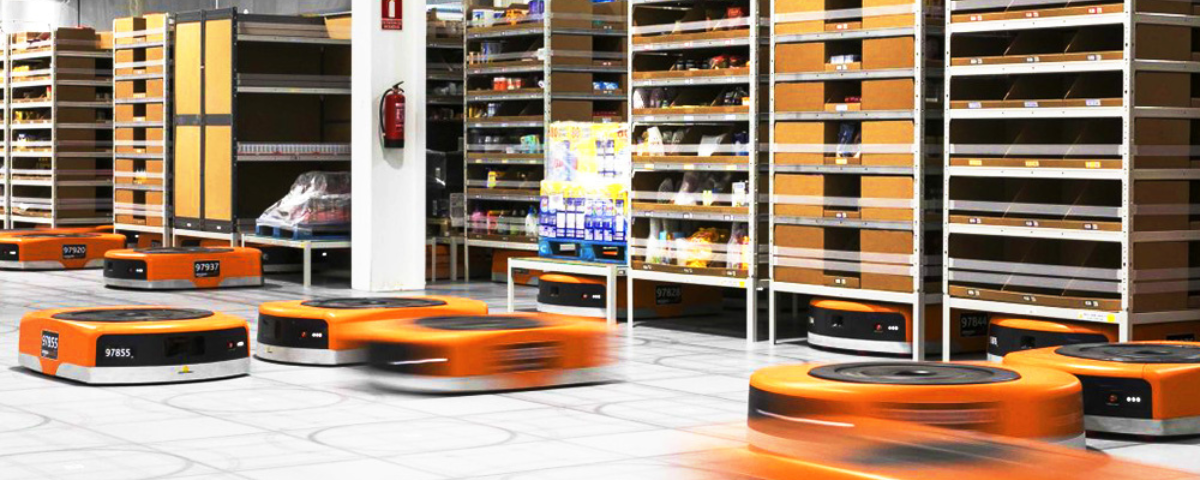Innovations in Industrial Robotics: A Spotlight on Leading AMR Manufacturers

The rise of Autonomous Mobile Robots (AMRs) is transforming industrial robotics, addressing complex needs across sectors, and driving new levels of efficiency and flexibility. As manufacturers seek adaptive, intelligent automation, AMR companies are leading the charge with cutting-edge technology. These advancements enable industries to improve productivity, safety, and cost-effectiveness, underscoring why AMRs are rapidly becoming essential in the modern industrial toolkit.
What Are AMRs?
 Autonomous Mobile Robots (AMRs) are intelligent, flexible robotic systems that use sensors, cameras, and advanced software to navigate and perform tasks autonomously. Unlike Automated Guided Vehicles (AGVs), which rely on fixed routes like magnetic tapes or wires, AMRs use real-time data and intelligent navigation systems to adapt to their environment, avoid obstacles, and efficiently complete tasks. This level of autonomy makes them highly effective in dynamic environments.
Autonomous Mobile Robots (AMRs) are intelligent, flexible robotic systems that use sensors, cameras, and advanced software to navigate and perform tasks autonomously. Unlike Automated Guided Vehicles (AGVs), which rely on fixed routes like magnetic tapes or wires, AMRs use real-time data and intelligent navigation systems to adapt to their environment, avoid obstacles, and efficiently complete tasks. This level of autonomy makes them highly effective in dynamic environments.
Benefits of AMRs in Industrial Settings
Leading AMR Manufacturers
Several AMR companies are at the forefront of this industrial revolution, each offering unique solutions to cater to different operational requirements. Companies like Intel, Mobile Industrial Robots (MiR), and Keybotic are recognized for their innovative AMR technologies. Intel, for example, provides essential components and technology frameworks that drive AMR systems’ AI and machine learning capabilities, enhancing their adaptability and precision. MiR is well-known for its AMRs in warehouse and logistics applications, where their robots help optimize inventory handling and movement.
Keybotic: Pioneering Autonomous Robotics with Keyper
At Keybotic, we are revolutionizing industrial automation with Keyper, our autonomous mobile robot (AMR) engineered for precision and adaptability. Keyper autonomously conducts industrial inspections, navigating multi-story facilities without needing GPS or internet connectivity. Equipped with sensors, cameras, microphones, and 3D mapping capabilities, Keyper provides real-time insights and alerts, enhancing safety and operational efficiency. Its robust design allows it to traverse stairs, slopes, and uneven terrains, making it ideal for industries such as chemicals, oil and gas, energy and utilities, and mining. By automating routine inspections, Keyper enables businesses to optimize workflows, reduce manual labor, and continuously monitor demanding environments.
Recent Innovations in AMRs
As industrial demands evolve, AMR companies are innovating to push the boundaries of what autonomous robots can achieve.
Advanced Navigation Systems
Leading AMRs now feature sophisticated navigation systems, such as simultaneous localization and mapping (SLAM) technology, which allows robots to create real-time maps of their surroundings. This capability enables AMRs to navigate complex environments, providing efficiency and reliability in unpredictable spaces.
AI and Machine Learning Integration
Artificial intelligence and machine learning have become pivotal in enhancing AMR functionality. Keyper, for example, uses AI algorithms to identify and avoid obstacles, plan optimal routes, and adapt to changes in real time, allowing it to function without human intervention.
Collaborative and Versatile AMRs
Modern AMRs are designed to work seamlessly alongside human employees, fostering a collaborative approach that’s especially beneficial in settings like warehousing and logistics. In these environments, robots efficiently manage repetitive tasks, freeing human workers to focus on more complex responsibilities. Additionally, autonomous robots built for industrial inspections, such as Keyper, contribute significantly to workplace safety by monitoring potential HSE risks and accessing areas that may be hazardous to human operators. This collaborative model not only enhances productivity but also elevates safety standards, ensuring a more secure environment for human workers.
Sustainability and Energy Efficiency
As industries increasingly prioritize environmental sustainability, AMR companies are integrating energy-efficient technologies to reduce the carbon footprint of their robots. A prime example is Keyper, an AMR designed with sustainability in mind. Its modular components make repairs easier and help minimize waste, extending the robot’s lifecycle and reducing environmental impact. This commitment to eco-friendly design aligns with industry trends, providing companies with sustainable solutions to achieve their automation goals.
Applications of AMRs
Warehousing and Logistics
In the warehousing sector, AMRs streamline inventory management by transporting goods to and from storage locations, reducing the time and labor associated with traditional methods. Companies using MiR’s AMRs, for instance, have seen faster inventory cycles and fewer errors.
Industrial Inspection
Industries like energy, mining, and chemical processing require regular inspections to maintain safety, identify potential hazards, and protect both personnel and the environment. Automating these inspections with an AMR designed for complex terrains and continuous environmental analysis—such as Keyper—allows for predictive equipment maintenance, reducing downtime and enhancing operational efficiency. This automation not only optimizes processes by enabling human operators to focus on strategic tasks but also helps minimize environmental impact, creating a safer and more sustainable work environment.
Manufacturing and Assembly
Manufacturing floors are increasingly adopting AMRs to handle tasks like material transportation, assembly assistance, and quality control. By reducing reliance on human labor for repetitive tasks, AMRs in manufacturing improve both throughput and safety.
Healthcare and Pharmaceuticals
In healthcare, AMRs transport medical supplies, samples, and documents, reducing personnel exposure to contamination and freeing up healthcare professionals to focus on patient care.
Agriculture and Farming
The agriculture sector is starting to leverage AMRs for tasks like crop monitoring, soil analysis, and autonomous harvesting. AMRs equipped with machine learning algorithms provide real-time insights, improving crop yield and reducing the labor intensity of farming.
Future Prospects of AMRs
What Lies Ahead for AMR Technology
The future of AMRs looks promising, with advancements in AI, sensor technology, and machine learning poised to make these robots even more autonomous, versatile, and accessible. Companies like Intel, MiR, and Keybotic are likely to play a significant role as industry demand grows, focusing on AMRs that blend cutting-edge technology with user-friendly interfaces.
The Role of AMRs in Industry 4.0
As Industry 4.0 continues to shape industrial landscapes, AMRs will be integral to creating smart factories and adaptive supply chains. The combination of real-time data collection, AI-based decision-making, and increased connectivity ensures that AMRs remain a cornerstone of future-ready industrial robotics.
Conclusion
AMR companies like Keybotic, Intel, and MiR are transforming industries by providing versatile, efficient, and safe automation solutions. As AMRs evolve, their role in the industrial landscape will only grow, ushering in a new era of productivity, sustainability, and innovation.
Interested in discovering how Keyper can automate inspection tasks at your industrial facilities—freeing up your team’s time, reducing downtime, and enabling predictive maintenance for enhanced safety? Contact our team today to learn more!



